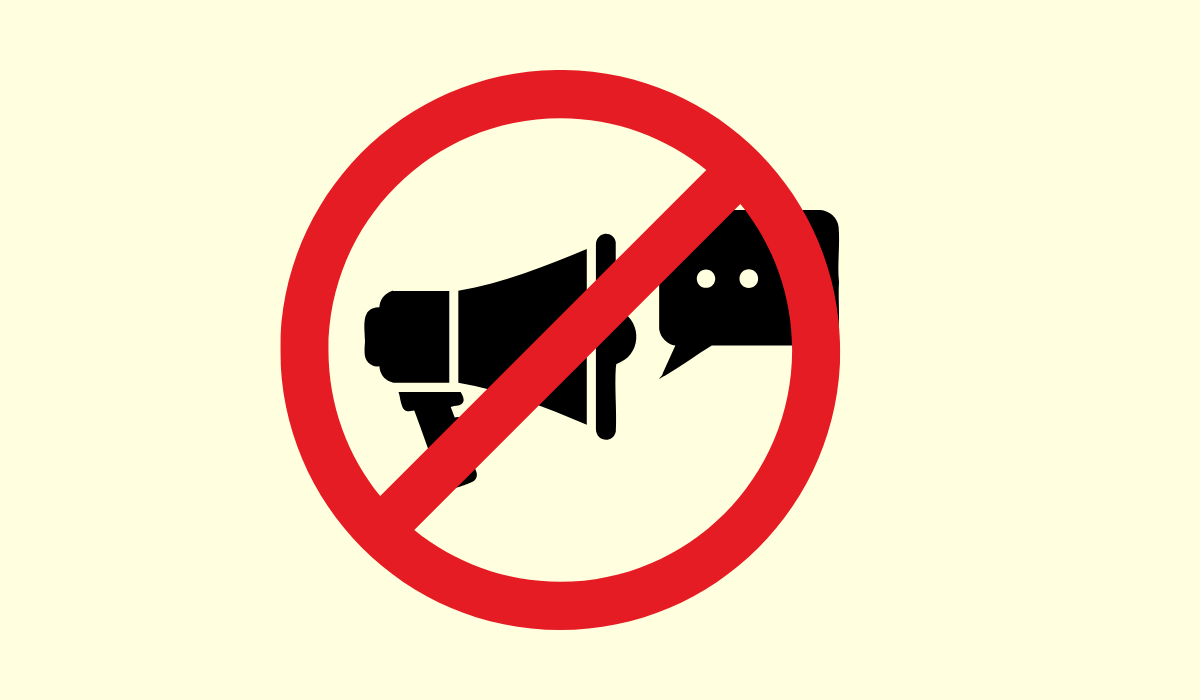Three months ago, your SMS campaigns hit 94% deliverability. Last month, 87%. This month, 81%.
The Ultimate Guide to Building an Effective SMS Subscribers List
Why It’s Important To Build A List Of SMS Subscribers

SMS marketing offers a direct and personal way to engage with customers, making it highly effective in capturing their attention and driving conversions.
Building an SMS subscribers list allows businesses to reach their target audience instantly, delivering personalized messages and offers directly to their mobile devices.
Moreover, SMS boasts an impressive open rate of 98%, far surpassing the reach of email marketing. With such high engagement levels, businesses can leverage their SMS subscribers list to cultivate customer loyalty, drive sales, and increase brand awareness. By building an SMS subscribers list, businesses can establish a direct line of communication with their audience, ensuring that their messages are seen and acted upon.
Understanding the TCPA regulations
Before diving into building an SMS subscribers list, it is essential to understand the regulations set forth by the Telephone Consumer Protection Act (TCPA). The TCPA governs the use of automated messaging systems, including SMS marketing, to protect consumers from unsolicited messages and spam. To comply with the TCPA, businesses must obtain prior express written consent from individuals before sending them promotional messages.
To ensure compliance, businesses should clearly outline their SMS marketing practices in their terms and conditions and privacy policy. Additionally, they must provide an easy opt-in and opt-out process for subscribers and maintain accurate records of consent. By understanding and adhering to the TCPA regulations, businesses can build an SMS subscribers list that is not only effective but also legally compliant.
Creating an opt-in process for SMS subscribers
An effective opt-in process is the foundation of a successful SMS subscribers list. Businesses must provide clear and transparent information about what subscribers can expect when they sign up. This includes details about the frequency of messages, the type of content they will receive, and any associated costs. By setting clear expectations from the start, businesses can attract subscribers who are genuinely interested in their products or services.
One effective strategy for building an SMS subscribers list is to offer incentives for signing up. This could be in the form of exclusive discounts, early access to sales, or access to premium content. By providing value to subscribers, businesses can entice them to join their SMS list and stay engaged over the long term. Additionally, businesses should ensure that the opt-in process is seamless and user-friendly, allowing subscribers to easily provide their consent and opt-out if they wish.
Effective strategies to grow your SMS subscribers list
Building an SMS subscribers list requires a proactive approach. To grow your list, consider implementing the following strategies:
1. Promote your SMS list across multiple channels
Leverage your existing marketing channels, such as your website, social media platforms, and email newsletters, to promote your SMS list. Encourage your audience to subscribe by highlighting the benefits they will receive, such as exclusive offers or insider information. Make sure to include clear call-to-action buttons and opt-in forms to streamline the signup process.
2. Run SMS-exclusive campaigns and contests
Create buzz around your SMS list by running exclusive campaigns and contests. Offer special discounts or prizes that are only accessible to subscribers. This not only incentivizes new sign-ups but also encourages existing subscribers to remain engaged. Promote these campaigns through your various marketing channels to maximize reach and participation.
3. Collaborate with influencers and partners
Partnering with influencers and complementary businesses can significantly boost your SMS subscribers list. Identify influencers or businesses with a similar target audience and collaborate on joint promotions or giveaways. This cross-promotion exposes your brand to a wider audience and increases the likelihood of attracting new subscribers.
By implementing these strategies, businesses can organically grow their SMS subscribers list, ensuring a steady stream of interested and engaged subscribers.
Best practices for engaging with your SMS subscribers
Once you have built an SMS subscribers list, it is crucial to engage with your audience effectively. Here are some best practices to follow:
1. Personalize your messages
Personalization is key to capturing your subscribers’ attention and maintaining their interest. Use their first name in your messages and tailor the content based on their preferences and past interactions. By delivering relevant and personalized messages, you can increase engagement and drive conversions.
2. Keep your messages concise and valuable
SMS is a concise medium, so it’s important to keep your messages short and to the point. Focus on delivering valuable content that is relevant to your subscribers. Whether it’s a limited-time offer, a new product announcement, or important updates, ensure that your messages provide clear value to your subscribers.
3. Use SMS to drive traffic to other channels
While SMS is a powerful standalone marketing tool, it can also be used to drive traffic to other channels. Include links to your website, social media profiles, or landing pages in your messages to encourage subscribers to explore further. This cross-channel promotion can help nurture your relationship with subscribers and increase their engagement with your brand.
By implementing these best practices, businesses can maximize the effectiveness of their SMS subscribers list and build stronger relationships with their audience.
Segmenting and targeting your SMS subscribers
Segmentation is a critical step in optimizing the effectiveness of your SMS subscribers list. By dividing your subscribers into specific segments based on their demographics, preferences, or behaviors, you can deliver more targeted and relevant messages. This personalized approach increases the likelihood of engagement and conversion.
To effectively segment your SMS subscribers list, consider the following criteria:
- Demographics: Age, gender, location
- Purchase history: Previous purchases, average order value
- Interests: Product categories, preferences
- Engagement level: Open rates, click-through rates
By analyzing these factors, businesses can create tailored SMS campaigns that resonate with each segment. This targeted approach ensures that subscribers receive messages that are specifically relevant and valuable to them, increasing the overall success of your SMS marketing efforts.
Tools and platforms for managing your SMS subscribers list
Managing an SMS subscribers list can be a complex task, but there are several tools and platforms available to streamline the process. These tools offer features such as opt-in forms, automated messaging, and segmentation capabilities. Here are some popular options:
- SMS marketing platforms: Platforms like Twilio, EZ Texting, and SimpleTexting provide comprehensive SMS marketing solutions, including list management, automation, and analytics.
- Customer relationship management (CRM) software: CRM software like Salesforce or HubSpot can integrate with SMS marketing platforms to centralize customer data and manage communication across multiple channels.
- Email marketing software: Many email marketing platforms, such as Mailchimp or ConvertKit, now offer SMS marketing capabilities alongside their email features, allowing businesses to manage both channels in one place.
When choosing a tool or platform, consider factors such as ease of use, scalability, integration capabilities, and pricing. Selecting the right tool will simplify the management of your SMS subscribers list and enhance your overall SMS marketing strategy.
Case studies: Successful examples of building an effective SMS subscribers list
To further illustrate the power of building an SMS subscribers list, let’s examine a couple of successful case studies:
Case Study 1: Retail Apparel Brand
A retail apparel brand implemented an SMS marketing campaign to grow their subscribers list. They promoted their SMS list through their website and social media channels, offering an exclusive discount for new subscribers. By leveraging their existing customer base and social media following, they were able to attract a large number of sign-ups within a short period.
To keep subscribers engaged, they sent personalized messages with product recommendations based on subscribers’ past purchases and preferences. They also used SMS to announce flash sales and limited-time promotions. As a result, they experienced a significant increase in sales and customer retention, with their SMS subscribers becoming their most loyal and valuable customers.
Case Study 2: Restaurant Chain
A restaurant chain used SMS marketing to engage with their customers and drive foot traffic to their locations. They ran a contest where subscribers had the chance to win a free meal by texting a keyword to a designated number. The contest was promoted through their website, social media, and in-store signage.
Not only did the contest attract a large number of new subscribers, but it also increased customer visits and generated buzz around their brand. Subscribers received regular updates about new menu items, special promotions, and exclusive events. The restaurant chain saw a significant increase in customer loyalty and repeat visits, directly attributed to their SMS marketing efforts.
The future of SMS marketing
Building an effective SMS subscribers list is a powerful marketing strategy that allows businesses to engage with their audience on a personal level and drive tangible results. By understanding the TCPA regulations, creating an opt-in process, implementing effective growth strategies, and following best practices, businesses can leverage SMS marketing to its full potential.
As technology continues to advance, SMS marketing will only become more sophisticated. Businesses can expect to see advancements in automation, personalization, and integration with other marketing channels. By staying ahead of these trends and continually adapting their strategies, businesses can maintain a competitive edge and build long-lasting relationships with their SMS subscribers.
In conclusion, building an SMS subscribers list is not only important but also essential for businesses looking to connect with their audience in a direct and impactful way. By following the steps outlined in this guide, businesses can build an effective SMS subscribers list and unlock the full potential of SMS marketing.
Start building your SMS subscribers list today and unlock the power of direct and personalized communication with your audience.
More Articles


SMS Marketing, SMS, sms carrier, tcpa
Why SMS Marketing Might Be Dead in 5 Years—If Carriers Keep This Up
For over a decade, SMS marketing has been the bedrock of mobile engagement. With open rates often cited above 95% and near-universal device compatibility, it seemed indestructible. Yet today, industry insiders are sounding the...

SMS, sms carrier, tcpa, tcpa restrictions
Are SMS Compliance Rules Silencing Free Speech in Marketing?
Few marketing channels are as tightly controlled — yet so widely used — as SMS. Behind every promotional text lies an invisible gauntlet of carrier rules, algorithmic filters, and registration barriers. Most recipients never...